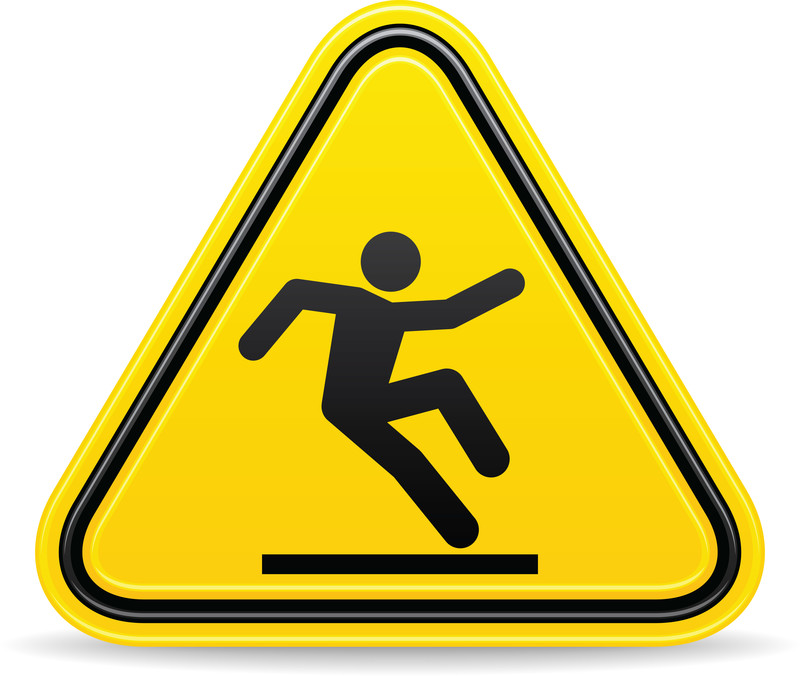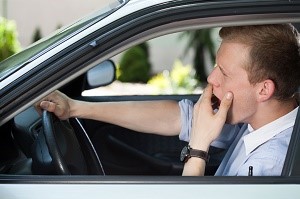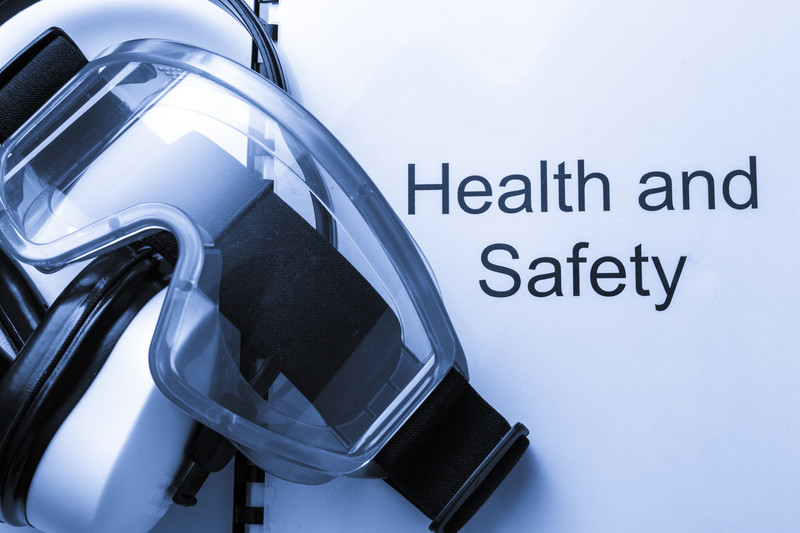Safety Moment - June 2018

Slips, Trips & Falls Prevention
Brought to you by Sisk & Co.
According to the National Safety Council, slips, trips and falls resulted in more than 25,000 fatalities in 2009. In this safety video, you will learn how to recognize and avoid hazards around the workplace.
Click here to watch their video.
Safety Moment - April 2018

All ladders are potentially dangerous, but straight ladders, extension ladders, and special-purpose ladders can be especially hazardous because they’re less stable than stepladders.
Accidents with these types of ladders usually happen because:
The ladder is damaged or defective
The ladder is set-up improperly
The ladder is used improperly
Remember, ladder accidents can cause very serious – even fatal – injuries. So be extra careful when working on a high ladder or using a ladder in an awkward or hard-to-reach spot. And always follow the basic rules of ladder safety:
Move slowly when working on a ladder
Always act cautiously
Safety Moment - March 2018
Drowsy Driving is Impaired Driving

According to the American Sleep Foundation, about half of U.S. adult drivers admit to consistently getting behind the wheel while feeling drowsy. About 20% admit to falling asleep behind the wheel at some point in the past year – with more than 40% admitting this has happened at least once in their driving careers.
These startling figures show how prevalent drowsy driving is. What drivers may not realize is how much drowsy driving puts themselves – and others – at risk. In fact, an estimated 5,000 people died in 2015 in crashes involving drowsy driving, according to a Governors Highway Safety Association report.
Impact of Drowsiness on Driving
Driving while drowsy is similar to driving under influence of alcohol:
- Drivers’ reaction times, awareness of hazards and ability to sustain attention all worsen the drowsier the driver is
- Driving after going more than 20 hours without sleep is the equivalent of driving with a blood-alcohol concentration of 0.08% – the U.S. legal limit
- You are three times more likely to be in a car crash if you are fatigued
A driver might not even know when he or she is fatigued because signs of fatigue are hard to identify. Some people may also experience micro-sleep, a short, involuntary burst of inattantion. Micro-sleep of just 4 or 5 seconds can result in a vehicle traveling the length of a football field if the driver is driving at highway speed.
Prevalence of Drowsy Driving Crashes
According to the National Highway Traffic Safety Administration, every year about100,000 police-reported crashes involve drowsy driving. These crashes result in more than 1,550 fatalities and 71,000 injuries. The real number may be much higher, however, as it is difficult to determine whether a driver was drowsy at the time of a crash.
A study by the AAA Foundation for Traffic Safety estimated that 328,000 drowsy driving crashes occur annually. That's more than three times the police-reported number. The same study found that 109,000 of those drowsy driving crashes resulted in an injury and about 6,400 were fatal. The researchers suggest the prevalence of drowsy driving fatalities is more than 350% greater than reported.
Beyond the human toll is the economic one. NHTSA estimates fatigue-related crashes resulting in injury or death cost society $109 billion annually, not including property damage.
Interventions for Drowsy Driving
Drowsy driving affects everyone, but especially those under age 25, who make up an estimated 50% or more of drowsy driving crashes.
That means interventions focusing on this age group – males especially – can help reduce drowsy driving among those vulnerable. One such intervention is for parents to incorporate discussions and rules on drowsy driving while completing their parent-teen driving agreements.
Other ways to reduce drowsy driving include:
- Crash avoidance technologies: New and existing safety technologies, such as drowsiness alert and lane departure warnings, can detect common drowsy driving patterns and warn drivers to stay in their lane or take a break
- University interventions: College students receive less than average sleep, with some estimates at less than six hours a night; education programs aimed at college students may help curb drowsy driving and instill healthier behaviors that can last into adulthood
- Getting more sleep: According to the American Academy of Sleep Medicine and the Sleep Research Society, adults should get seven or more hours of sleep each night
- Medication labels: A 2015 article by Consumer Reports found that side effects warnings are not always clear; new labeling guidelines may help drivers understand when to drive or not drive after taking these medications
- Employers: Workplaces with strong off-the-job safety and health programs can include key information on getting sufficient sleep and refraining from driving drowsy
Key Resources and Drowsy Driving Initiatives
- Drowsy Driving Prevention Week
- U.S. Department of Health and Human Services' Healthy People 2020 Program
- NTSB Most Wanted List of Transportation Safety Improvements: Reduce Fatigue-Related Accidents
- Asleep at the Wheel: The Prevalence and Impact of Drowsy Driving
- Wake Up Call! Understanding Drowsy Driving and What States Can Do
Too Tired to Drive?
The following are signs and symptoms of drowsy driving, according to the American Academy of Sleep Medicine:
- Frequent yawning or difficulty keeping your eyes open
- "Nodding off" or having trouble keeping your head up
- Inability to remember driving the last few miles
- Missing road signs or turns
- Difficulty maintaining your speed
- Drifting out of your lane
Source: National Safety Council
Safety Moment - August 2017
By Neal Lyon, Director of Compliance and Safety
Ergonomics
Ergonomics is defined as the scientific study of how the human body performs tasks in the workplace. Practicing good ergonomics can reduce the risk of work-related muscular skeletal disorders (WMSD) and protect your workers. The following are some risk factors that contribute to WMSD: working in awkward postures, performing repetitive motions, heavy, frequent or awkward lifting and more. The pest management profession has many risk factors for WMSD. How long, how often and how much a person is doing a particular job puts them at greater risk. For training tips for your technicians and all of your employees we recommend the following video from the Washington State Department of Labor & Industries
Safety Moment - July 2017
Heat Illness Prevention
By Neal Lyon, Director of Compliance and Safety
Heat illness can be prevented! As summer heats up ensure you have a plan to keep your employees protected from the heat. Water is key to ensuring they stay hydrated – be sure to provide adequate water, especially during a heat wave, shade and rest are critical so encourage employees to take a break from the sun and rest while they hydrate. Finally, train your employees using this video supplied by the California Dept of Industrial Relations to train on how to prevent and respond to heat illness. Stay safe from the heat this summer!
Safety Moment - June 2017
Summer Safety Tips
By Neal Lyon, Director of Compliance and Safety

With summer weather and the busy season upon us it is a great time to remind your employees of important summer safety tips while on the job and off. Read on for important safety reminders for your pest and lawn technicians….
Slow down on the roads
Summer break means more kids are home from school. Remind your technicians to slow down, especially when driving through communities where children may be playing in the streets.
Stay protected from the sun
Pest control often requires outdoor work. Statistics now say that 1 out of 5 Americans will get skin cancer from overexposure to UV rays. Ensure your technicians always wear appropriate clothing and sunscreen to keep their skin healthy.
When lightning strikes, take cover
Reminder your workers to move to an area of safety should a storm pass through. Move to their vehicle or inside of the home or business they are servicing. While there, keep away from windows, running water and electrical appliances.
Stay hydrated
Hot weather can cause heat stroke and heat cramps. Ensure your technicians are well-hydrated by either providing drinks for them at your office or encouraging them to pack coolers or thermoses with cold water while on the road and out on job sites.
Stay protected from pests
Remind technicians of the importance of bug repellent when they are working outdoors. Mosquitoes and ticks carry viruses and disease, their skin should always be covered or exposed skin treated with a repellent. Also remind your technicians to ensure they wear the appropriate safety gear when treating for stinging insects.
Safety Moment - May 2017

By Neal Lyon, Director of Compliance and Safety
Slips, Trips, and Falls
People may not view pest management as a dangerous job but falls are a real concern for technicians in the field. The unfortunate news of a pest control technician falling to his death here in California happened just this spring and serves as a reminder of the dangers of our work.
According to Injury Facts 2016®,falls are the third leading cause of unintentional death in the U.S., accounting for nearly 32,000 deaths in 2014. The risk of falling rises with age.
The National Safety Council has provided the following fall prevention tips:
- Clean up all spills immediately
- Secure electrical and phone cords out of traffic areas
- Wear shoes with good support and slip-resistant soles
- Keep drawers and cabinet doors closed at all times
- Install (and use) handrails on all staircases on both sides
- Remove tripping hazards (paper, boxes, books, clothes, toys, shoes) from stairs and walkways
- Ensure adequate lighting both indoors and outdoors
- Periodically check the condition of walkways and steps, and repair damages immediately
- Never stand on a chair, table, or other surface on wheels

